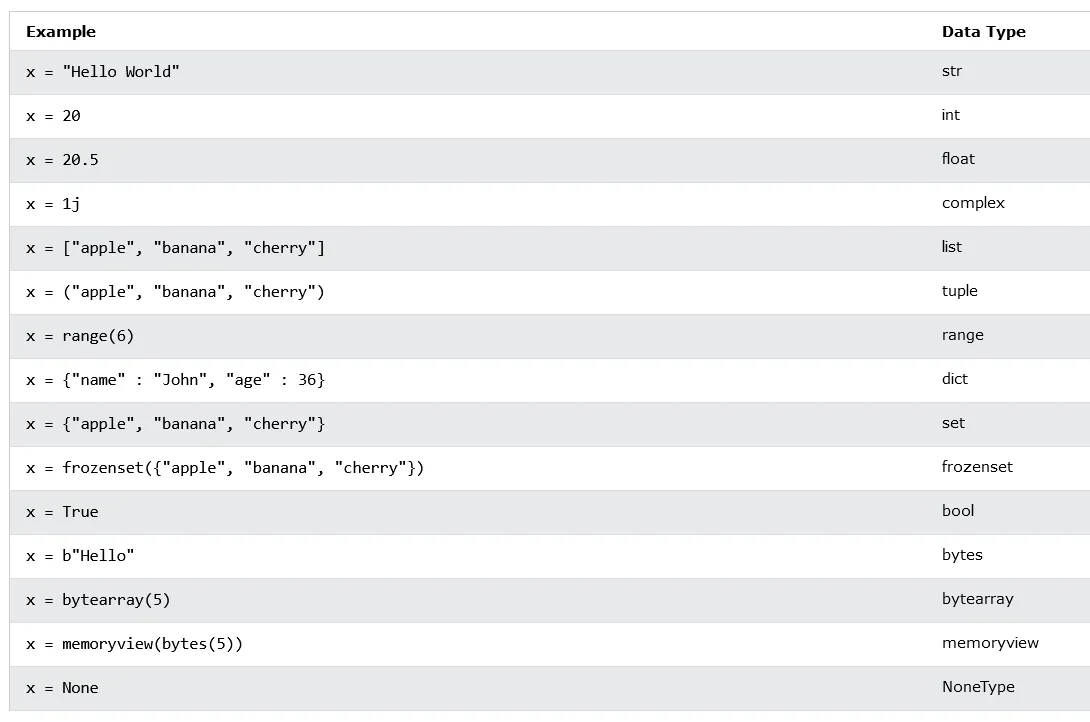Python Data Types - Explained with Examples
Dive into Python data types! A comprehensive guide with real-world examples, unraveling the versatility and power of data types for efficient coding in Python
Built-in Data Types
In programming, data type is an important concept.
Variables can store data of different types, and different types can do different things.
Python has the following data types built-in by default, in these categories:
| Text Type: | str |
| Numeric Types: | int, float, complex |
| Sequence Types: | list, tuple, range |
| Mapping Type: | dict |
| Set Types: | set, frozenset |
| Boolean Type: | bool |
| Binary Types: | bytes, bytearray, memoryview |
| None Type: | NoneType |
Getting the Data Type
You can get the data type of any object by using the type() function:
Example
Print the data type of the variable x:
x = 5
print(type(x)) Setting the Data Type
In Python, the data type is set when you assign a value to a variable:

Setting the Specific Data Type
If you want to specify the data type, you can use the following constructor functions:

#python

2.30 GEEK